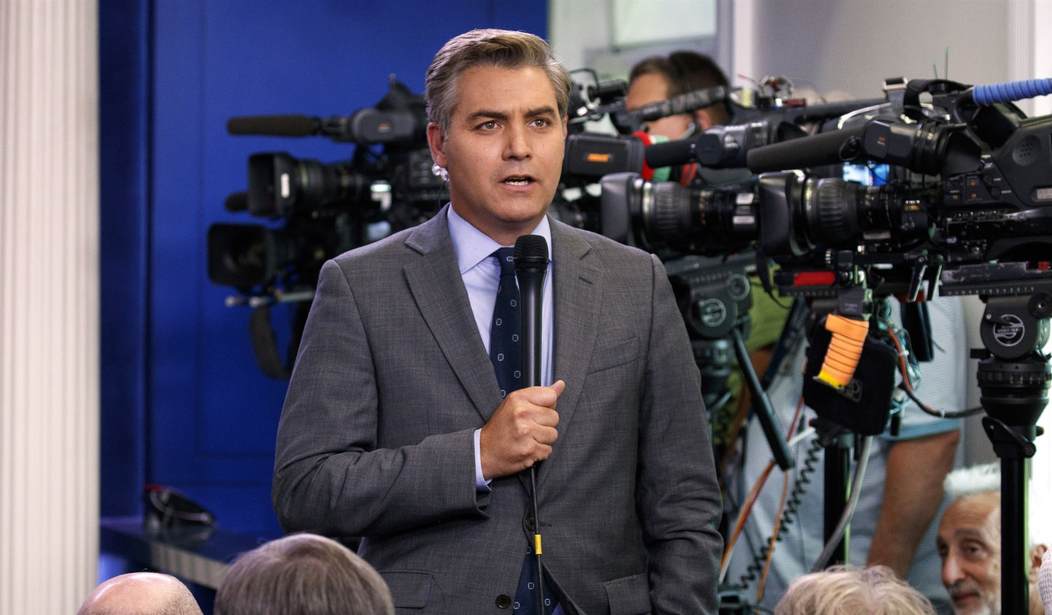A reporter can ask tough questions and aggressively follow-up without being a jerk. But CNN’s Jim Acosta . . . not so much.
Nonetheless, the so-called Clinton News Network’s lead White House correspondent is back at work, again in possession of his coveted press pass, thanks to a preliminary ruling from a federal judge newly appointed by President Trump.
The judge’s temporary restraining order against the Trump Administration requires that Acosta’s revoked credentials be restored. It doesn’t mandate that the president call on Acosta when he shouts out a question.
Of course, Trump may relish this continuous battle as much as does Acosta.
The initial court decision is predicated on a lack of due process. Mr. Acosta and Mr. Trump both have First Amendment rights, but the White House belongs to we, the people, and policies cannot be instituted that diminish equal access or punish reporters for their political viewpoint or deny due process in making such decisions.
Like me, you might wonder why acting rudely, or blocking the advancing arm of the young woman trying to retrieve the White House-owned microphone after Acosta was told the president was through answering the question, wouldn’t be grounds enough. In their court filings, the Trump Administration surprisingly did not raise that as a reason for rescinding Acosta’s pass.
President Trump and the biggest television and print media outlets will now continue their very public mutual mistreatment. The media has a right to give the president coverage as negative as they want. And Donald Trump has a right to criticize those media people and institutions and to go around them.
Recommended
It is why I’m nonplussed when people suggest Trump shouldn’t tweet so much. No president has ever so desperately needed a communications vehicle independent of the national press corps.
But Trump could go further to help create a better media environment. And he could do this while simultaneously encouraging greater media diversity.
Why not open media access to the White House to more non-traditional journalists? And to avoid overcrowding, perhaps limit the duration for each media outlet to have that access in a rotation process — sort of a “term limit.”
This is not to avoid tough questions or undermine certain outlets, but rather a way to stop playing into the power and privilege of the biggest media players, the nation’s fiercely anti-Trump media establishment.
It brings to mind a funny story from decades ago. Way back when, while serving as the executive director of U.S. Term Limits, I found myself in front of a mic being peppered with questions at a news conference. But one question stood out: Are you calling for term limits for the media?
Huh? Turns out that we had poorly worded a document in our press packet, mentioning that we would be “a source of information on term limits for the media.” Of course, our intent was to be “a source of information for the media on term limits.”
Nonetheless, I couldn’t resist putting a finger to my lips. “Ssshhh!” And I generously suggested that while we were not pursuing it, should that cat ever get out of the bag, the idea might certainly have legs.























Join the conversation as a VIP Member